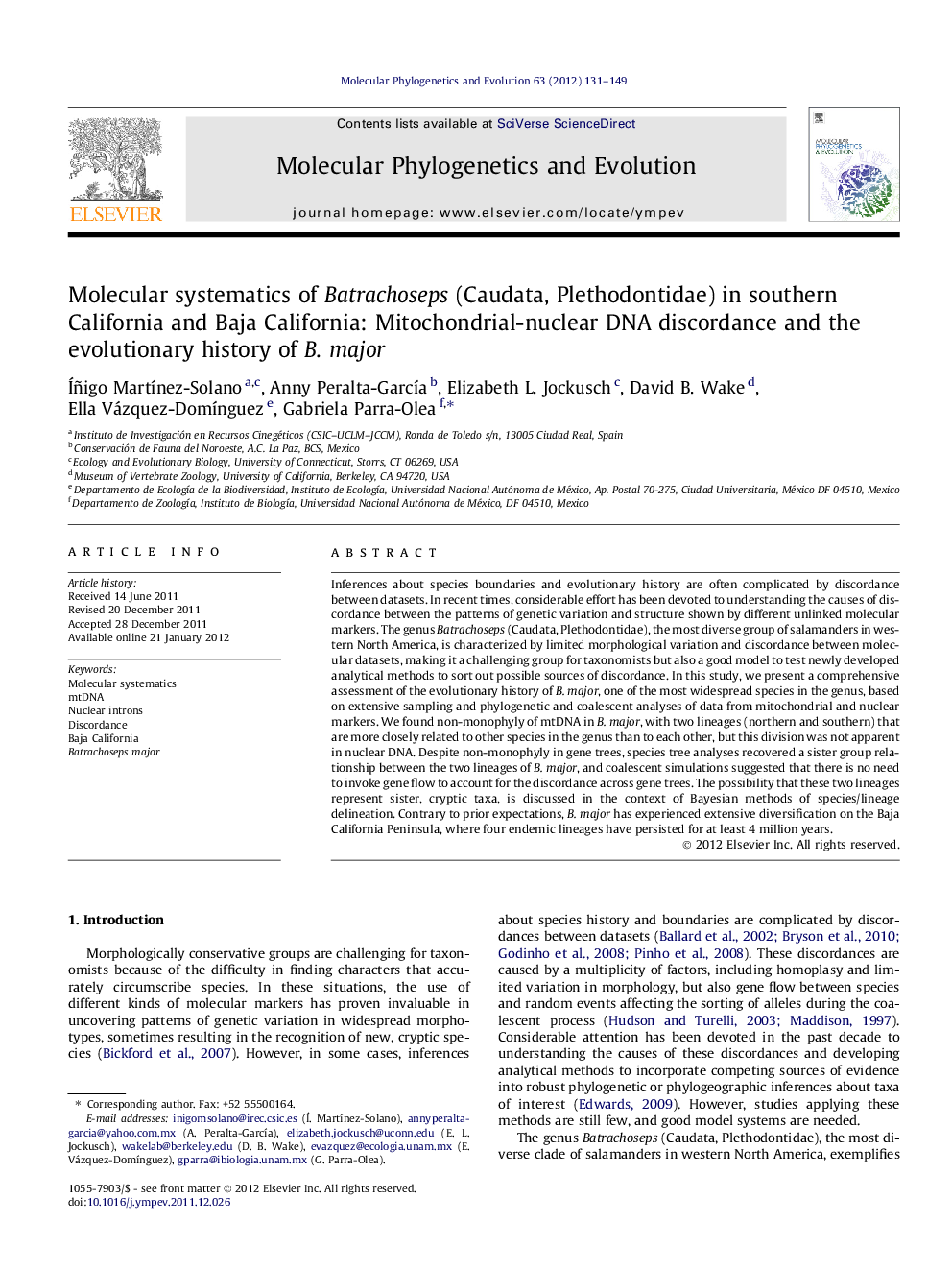| Article ID | Journal | Published Year | Pages | File Type |
|---|---|---|---|---|
| 2834170 | Molecular Phylogenetics and Evolution | 2012 | 19 Pages |
Inferences about species boundaries and evolutionary history are often complicated by discordance between datasets. In recent times, considerable effort has been devoted to understanding the causes of discordance between the patterns of genetic variation and structure shown by different unlinked molecular markers. The genus Batrachoseps (Caudata, Plethodontidae), the most diverse group of salamanders in western North America, is characterized by limited morphological variation and discordance between molecular datasets, making it a challenging group for taxonomists but also a good model to test newly developed analytical methods to sort out possible sources of discordance. In this study, we present a comprehensive assessment of the evolutionary history of B. major, one of the most widespread species in the genus, based on extensive sampling and phylogenetic and coalescent analyses of data from mitochondrial and nuclear markers. We found non-monophyly of mtDNA in B. major, with two lineages (northern and southern) that are more closely related to other species in the genus than to each other, but this division was not apparent in nuclear DNA. Despite non-monophyly in gene trees, species tree analyses recovered a sister group relationship between the two lineages of B. major, and coalescent simulations suggested that there is no need to invoke gene flow to account for the discordance across gene trees. The possibility that these two lineages represent sister, cryptic taxa, is discussed in the context of Bayesian methods of species/lineage delineation. Contrary to prior expectations, B. major has experienced extensive diversification on the Baja California Peninsula, where four endemic lineages have persisted for at least 4 million years.
Graphical abstractFigure optionsDownload full-size imageDownload as PowerPoint slideHighlights► Species tree analyses support the monophyly of Batrachoseps major. ► mtDNA polyphyly and lack of support for monophyly in individual nuclear markers. ► The evolutionary history of B. major dates back to the Miocene. ► Five mtDNA lineages of B. major in the Baja California Peninsula.
